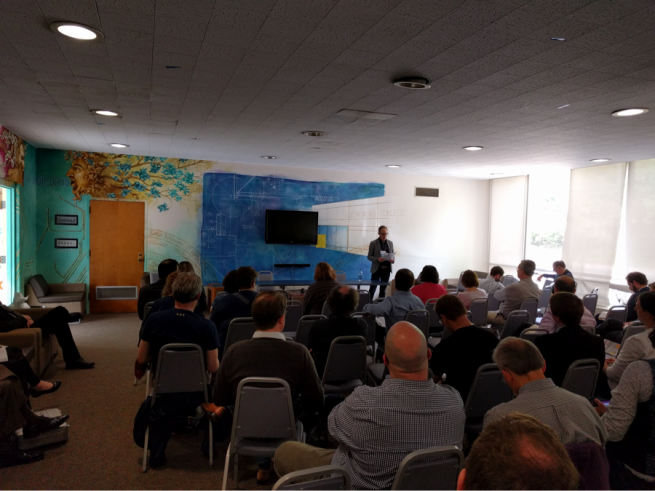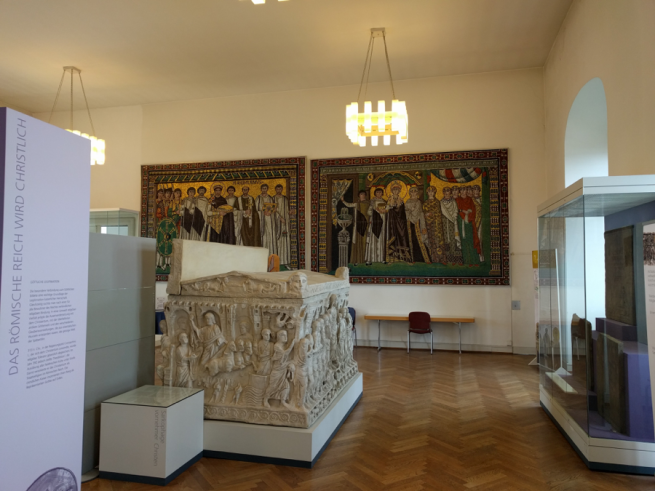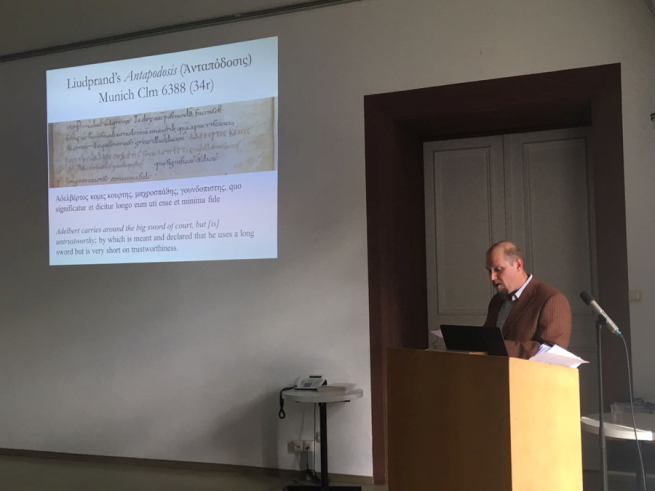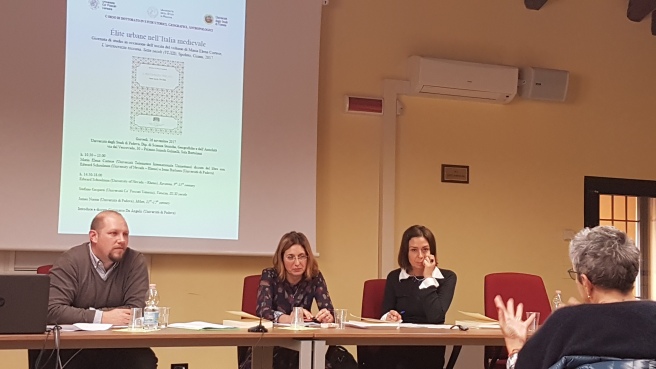This post originally appeared on the University of Nevada’s NSights Blog here on 6/27/2017: https://www.unr.edu/nevada-today/blogs/2017/how-i-spent-my-summer-sabbatical
Ch. 1: May 2017: How many medievalists…
Every year in early May, as universities and colleges around the country are in the final phases of their spring semesters, 3000 medievalists descend on the campus of Western Michigan University for the International Congress on Medieval Studies. Unlike other large gatherings of medievalists, the ICMS is an egalitarian affair, with accommodation in small and Spartan rooms available in the dorm, and with presentations mixing together undergraduates in panels with distinguished emeriti, and welcoming to those studying in fields of archaeology, art, history, literature, religion, language and everything in between. This breadth can be seen in the contributions of UNR faculty to the program this year: Jaime Leaños (WLL) gave a presentation on “Medievalism: Mio Cid’s Golden Age as the Cradle for Cervantes’s Decrepit Present” in a panel on Medievalism and Don Quixote, while Angela Bennet (English) offered “Spatializing Information and Informatizing Space” in a session on Geoinformatics.
As I arrived this year to the 52nd annual conference, I felt both excitement and relief. Excitement in seeing old friends and colleagues, hearing papers on topics that I know well and on subjects I was completely ignorant (but intrigued), and in presenting a short paper on a new topic, the survival of pagan practices in one of the last capitals of the western Roman Empire, the Italian city of Ravenna. Relief in that after a year of planning, the two panels I co-organized would finally take place.
Although planning panels consisting of 3-4 presenters and a presider seems like a relatively simple task, they never turn out to be. The process began in the spring of 2016: in a long e-mail discussion with two of my colleagues, Sam Cohen at Sonoma State and Laurent Cases, a post-doc at Penn State, we decided it would be great to revisit the topic of a seminar we took as young graduate students in the summer of 2007 at Central European University, The Birth of Medieval Europe: Interactions of Power Zones and their Cultures in Late Antique and Early Medieval Italy. We reached out to scholars, and over the course of three months during the summer of 2016 we put together the proposals we received into cohesive panels dealing with issues relating to power and society in late antique Italy, covering the period from roughly 400-800, and including studies on ranging from Roman imperial, Ostrogothic family, and Frankish royal politics to issues in conceptualizing history, taking oaths, and with my own project, maintaining pagan practices in a Christian city. These sessions took on a more urgent tone given their inspiration, both celebrating and supporting the Central European University during its continuing battle to maintain independence and academic freedom against laws passed by the Hungarian government.
With our panels set for Friday morning and afternoon, I had all Thursday to sample papers outside what I normally research, from medieval French poetry to Anglo-Norman tyrants. Waking up early on Friday, I reread my paper over coffee and waited for our panels Power and Society in Late Antique Italy I and II, to begin. The panel was held in a small common room in one of the dormitories that many of the ICMS attendees stay; as the clock approached 10, I was struck the room had become full! The papers flew by, and in the dinner we shared at the end of the night, new plans for future collaboration on “marginal voices” began to take shape.

After another full day of sessions (another three on Late Antiquity, on one of which I presided), we left Kalamazoo thinking about plans for 2019, and I flew directly to Germany… Next stop, the Römisch-Germanischen Zentralmuseum in Mainz!
Ch. 2: June 2017: The Volbach-Fellowship
The Römisch-Germanischen Zentralmuseum (RGZM) was founded in 1852 in Mainz, Germany, a relatively large city on the Rhine River near Frankfurt. Consisting of both a museum and a research institute, the RGZM contains a magnificent collection of original and replica object from the pre-Roman to early-medieval periods from across the Mediterranean, as well as one of the best libraries for archaeology and cultural studies of those same periods. One of the highlights are exact mosaic copies of the imperial portraits of the Byzantine emperor and empress Justianian (ruled 527-565 AD) and wife Theodora (d. 548), the originals of which are in the church of San Vitale in the small coastal Italian city of Ravenna. It is impossible to get as close to the originals as it is to view these amazing replicas.

I had a chance to spend a month getting to reacquaint myself with these and other objects through May and June, as I had the privilege of being the Wolfgang Fritz Volbach fellow sponsored by a joint research group between RGZM and the Johannes Gutenberg-University Mainz, the “Leibniz-WissenschaftsCampus: Byzantium between orient and occident.” This gave me the opportunity to spend an uninterrupted month in the library working on my own research projects, and to present a paper within the museum on the topic of “Greek and Byzantine Identities in Italy, 600-1000 AD.”

While in Mainz, I spent most of my time in the library of the RGZM. The library provided access to some of the essential volumes for my work. Here, with a dedicated desk in the middle of a library and a key that allowed me access 24 hours a day, an opportunity I used a number of times to continue work long after many of the institute staff left (although I was seldom the only one working late). Most of this time was spent looking at early medieval considering what linguistically, political, or cultural identity looked like in Italy, and following up on individual case studies. Although I came up with no firm conclusions, during my presentation on June 7, I spoke about a range of examples, from a monument set up by a man named Theodorus who called himself “grecus” (greek) in the year 600 in Rome to the writing of an Italian bishop, Liutprand, who enjoyed inserting Greek anecdotes into his Latin histories.

At the end of my month, and I left deeply impressed and indebted to the collegiality of the researchers at the RGZM and the Leibniz-WissenschaftsCampus, and excited about the possibilities to work their again. But I am equally excited about my next stop in the medieval Tuscan town of Poppi, Italy, where I will be doing research on the rise of noble Italian families…




